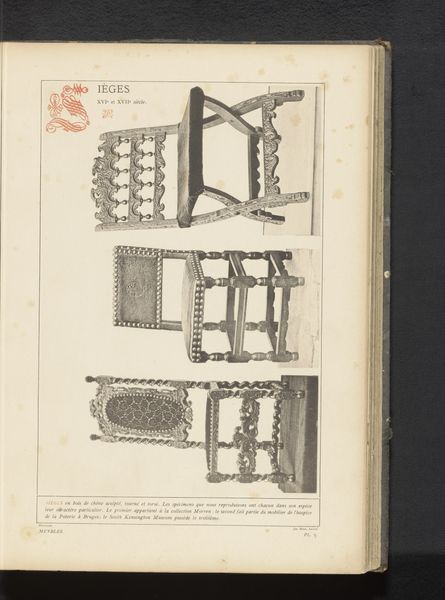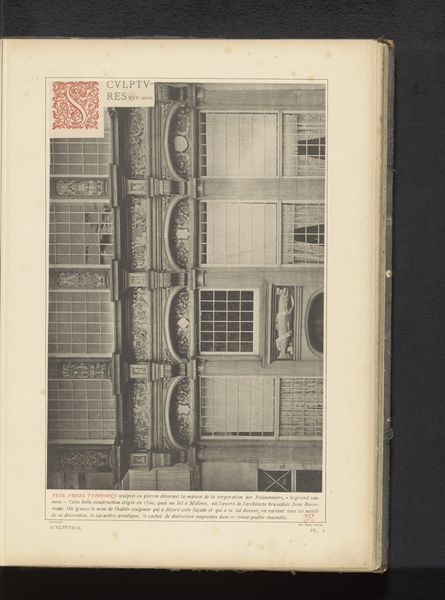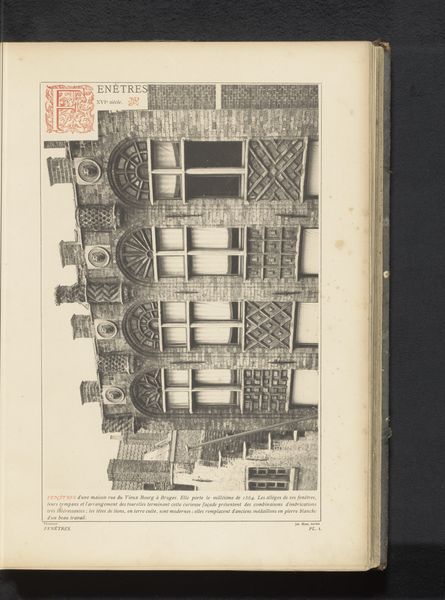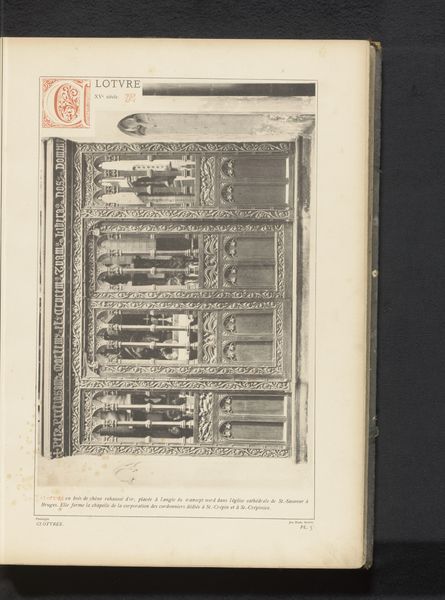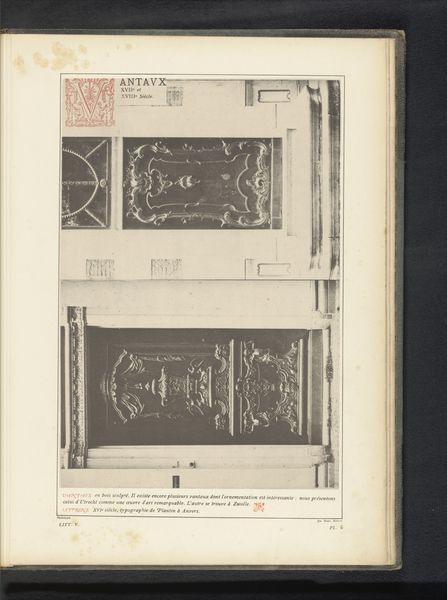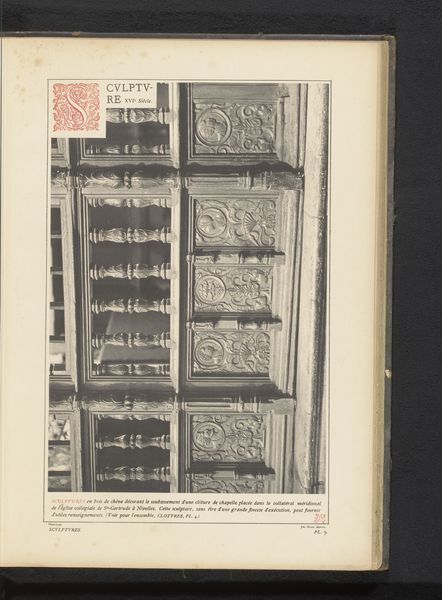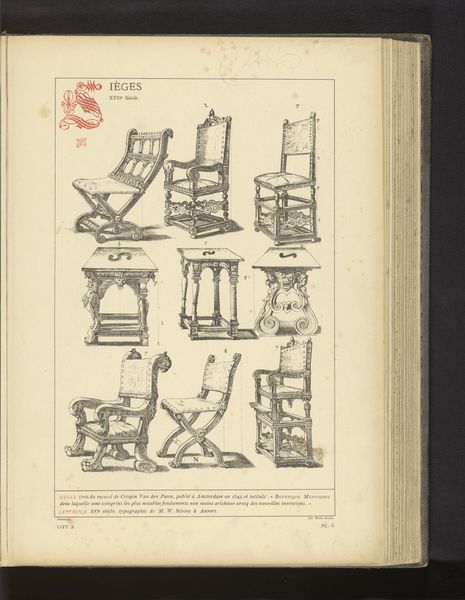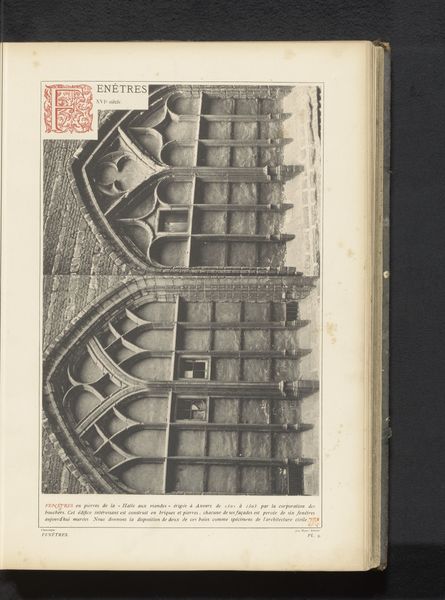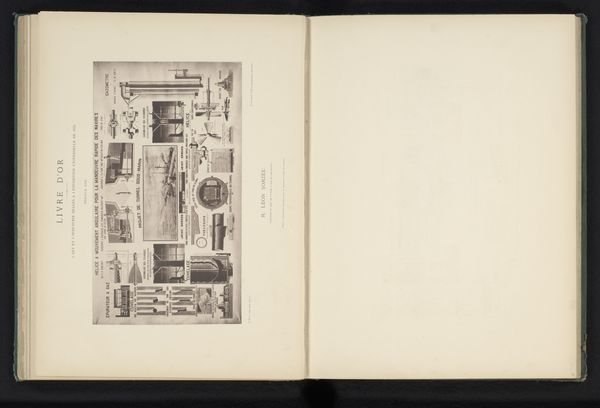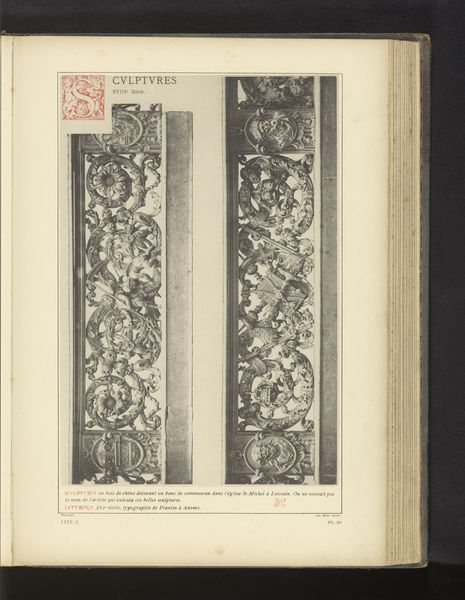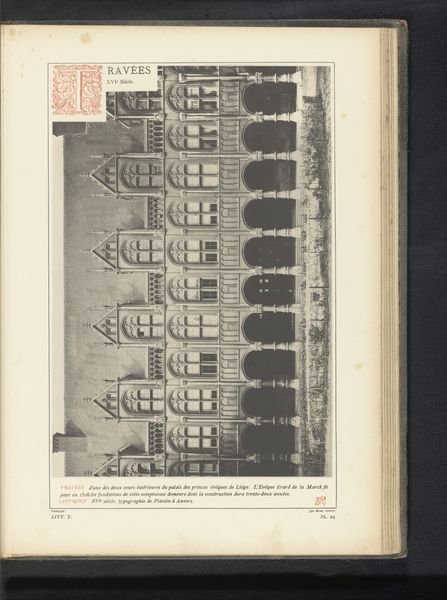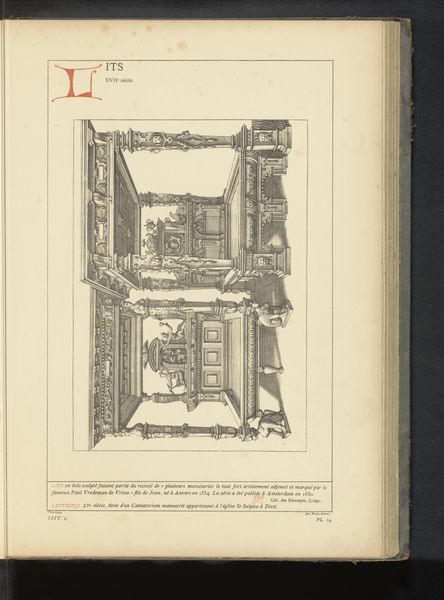
Reproductie van twee prenten met ontwerpen voor tafels en krukken door Hans Vredeman de Vries before 1881
0:00
0:00
drawing, print, engraving, architecture
#
drawing
# print
#
form
#
11_renaissance
#
geometric
#
line
#
northern-renaissance
#
engraving
#
architecture
Dimensions: height 343 mm, width 233 mm
Copyright: Rijks Museum: Open Domain
Curator: This fascinating image is titled 'Reproductie van twee prenten met ontwerpen voor tafels en krukken door Hans Vredeman de Vries.' The precise date eludes us, placing it before 1881. It's an intricate dance of line and form created through drawing and printmaking, including engraving. Editor: It has this wonderfully rigid, geometric aesthetic—a blueprint of Renaissance furniture, stark and almost mathematical. The repetition of forms is quite captivating; I'm struck by the density. Curator: Density is key. The engraving gives these architectural designs a distinct weight, despite being only lines on paper. Vredeman de Vries, deeply embedded in the Northern Renaissance, offered these not as mere decoration but as practical blueprints. His workshops likely relied heavily on this type of visual communication. Editor: The lines do indeed emphasize function, yes, but also suggest ornament. Look at the curlicues and the small volutes embellishing the table legs. Do those designs influence the structural integrity? Is there an interplay between form and function that elevates the design beyond pure utility? Curator: Absolutely, and considering this piece stems from a reproductive print, its own production speaks volumes. The creation and circulation of these design templates made high-style furniture accessible beyond elite circles. Craftspeople adopted, adapted, and disseminated these forms across wider social strata. The accessibility mirrors the democratizing aspects of the printing press itself. Editor: True, though it makes me wonder about the hierarchy implicit in its making. We have the master artist creating the original designs versus the engraver replicating them for mass consumption. Are the engravers celebrated or anonymous producers of somebody else’s genius? Is that line itself blurring as skill is exchanged? Curator: It's precisely that intersection—the interplay between artistic vision, mechanical reproduction, and its effect on social and cultural exchanges—that fascinates me most. Editor: And I see how it can reveal the inner mechanics of design principles. There’s an essential architectural beauty here that makes it captivating even divorced from its historical use. The formal interplay is delightful.
Comments
No comments
Be the first to comment and join the conversation on the ultimate creative platform.

